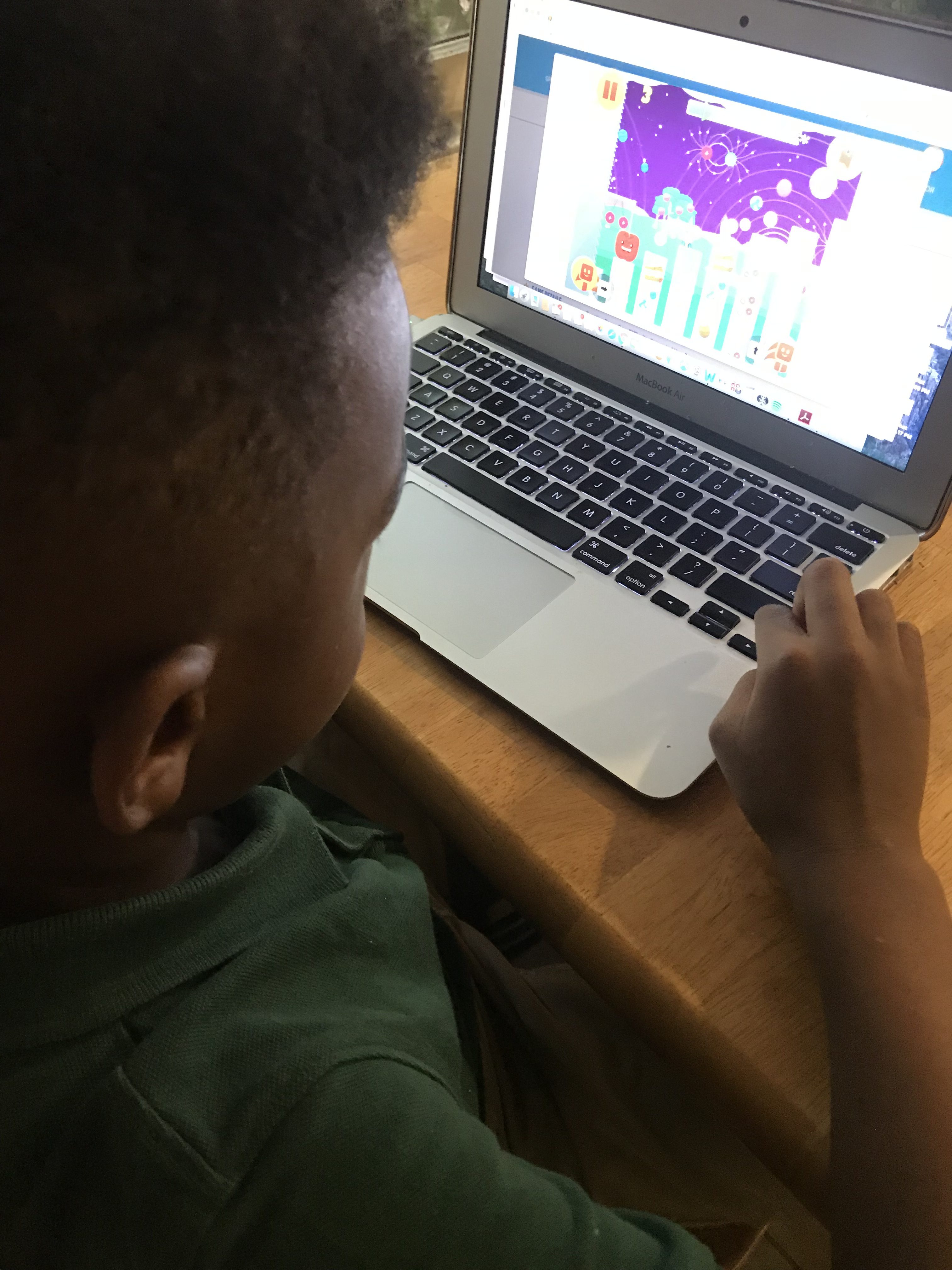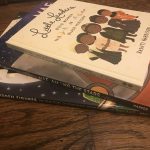Become a Science Superhero With Legends of Learning
This post is part of a collaboration with Women Online and Legends of Learning. All opinions are my own.
This might surprise many of you but I’m actually pretty good at science. Well, I was back in high school when I took Organic Chemistry and Microbiology to get out of taking another year of Spanish. Yes, you read that correctly. Sadly, I just didn’t find science very fun and preferred writing despite how long it took me to find my own voice.
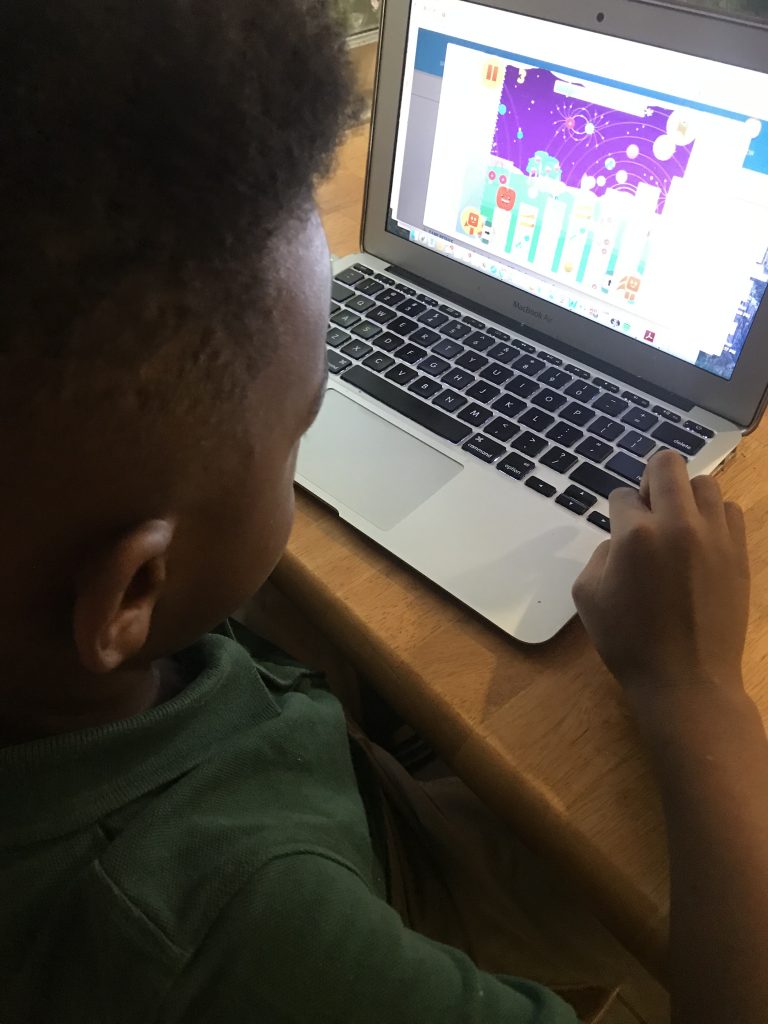
Now that Sesame is in school, it’s becoming increasingly clear that science and math are where he’s very strong. Unfortunately, I’ve been studying writing for so long that I find myself having to spend a lot of time on the web when it comes to looking for topics that not only interest him but ways to answer all the questions he asks me. This is one reason I decided to spend time working on a STEM unit for the most recent Black History is American History.
However, when creating lessons, I’ve found myself needing something more interactive to add to the lessons, which is why I was really excited when I found out about Legends of Learning.
What’s Legends of Learning? Legends of Learning focuses on aiding teachers in creating productive learning environments while also making classrooms fun spaces.
How do they manage to engage students? Through curriculum-based games that are fun for students but also help them develop a deeper understanding of the subject matter.
Right now Legends of Learning is focusing its educational heroism in the sciences – Life Sciences, Earth and Space Sciences, and Physical Sciences. There are more than 1000 science games designed for grades 3-8 and they are all completely free for teachers and students.
Now in addition to the other assignments I give for the STEM curriculum, I can also create playlists that will give students a bit more knowledge on the subject matter. For example, the STEM unit will include a lesson on Aprille Joy Ericsson Jackson, an aerospace engineer who works for NASA. In order to give students an idea of the work that Jackson does, I created a playlist that focuses on gravitational force. Students will spend about 30 minutes playing two different games, Nervous Apple and Gravity Stimulator. Both games help children understand how objects travel in space.
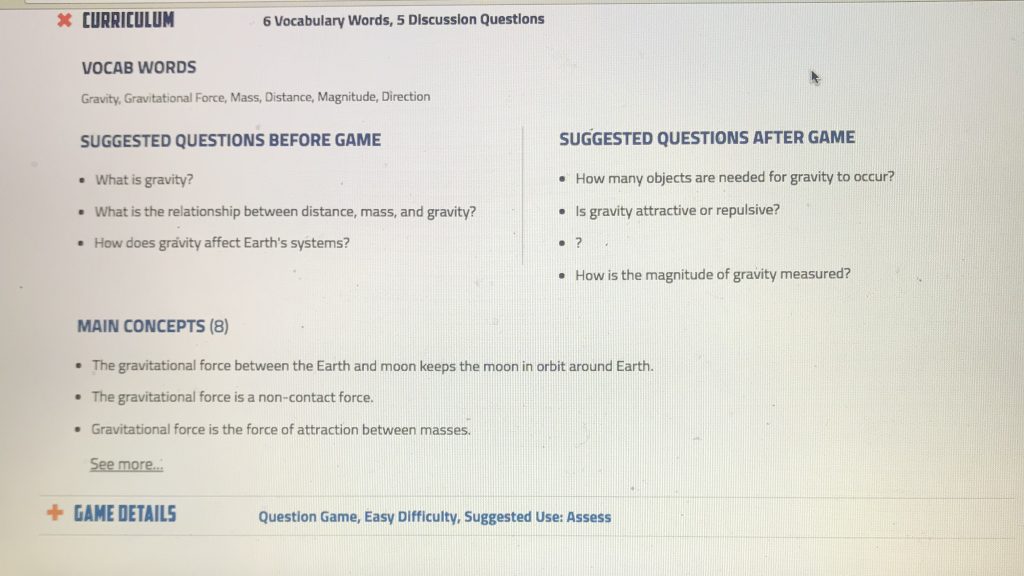
The games also provide teachers with suggested vocabulary words and discussion questions to help students prior to getting started. This is important because the games are meant to reinforce the material students have already learned, so you want to make sure they are fully prepared before getting started.
In Nervous Apple, the goal is to get your apple to a party by hopping from column to column while collecting coins. If you fall, you’ll be given the chance to answer a question about gravity to keep going. The questions like the one you see below require the student to use prior knowledge on gravitational force. This particular game is recommended for grades 4-6.
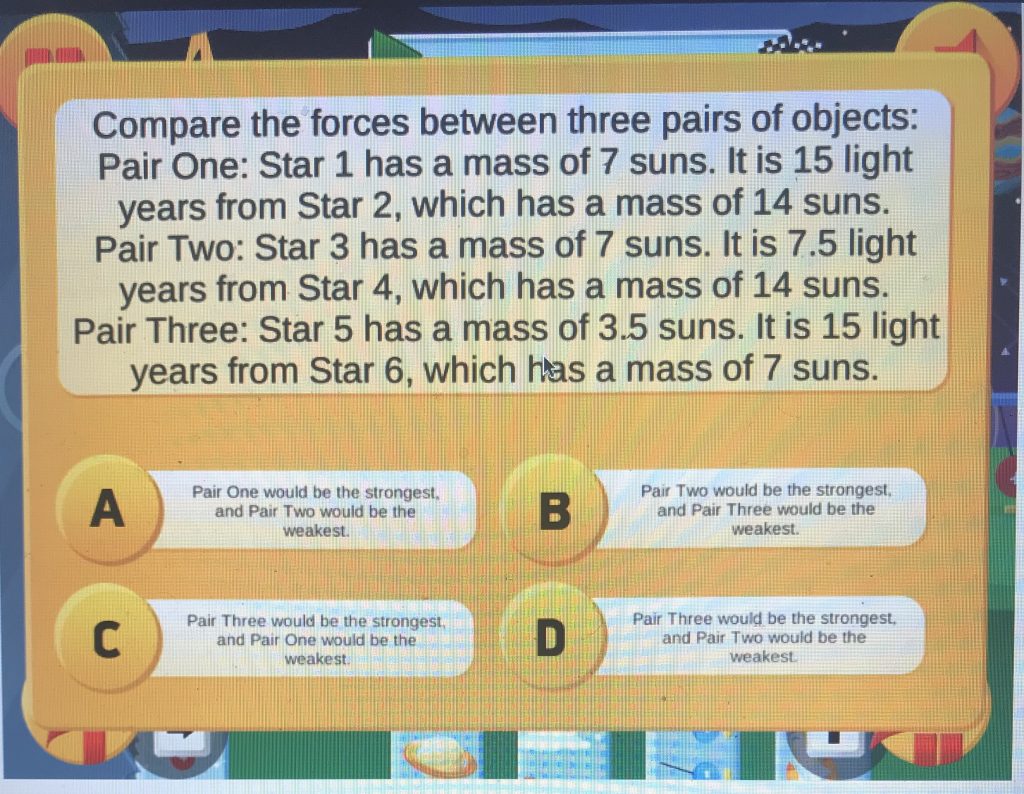 If you’re a teacher (or even a homeschooler) looking for a fun way to reinforce the sciences, I highly encourage you to check on Legends of Learning. Not a teacher or homeschooler? Be sure to pass the information along to your child’s school. Personally, I can’t wait to see what missions Legends of Learning takes on next. I’m sure you all know I’m hoping that they’ll focus on Language Arts or Social Studies next.
If you’re a teacher (or even a homeschooler) looking for a fun way to reinforce the sciences, I highly encourage you to check on Legends of Learning. Not a teacher or homeschooler? Be sure to pass the information along to your child’s school. Personally, I can’t wait to see what missions Legends of Learning takes on next. I’m sure you all know I’m hoping that they’ll focus on Language Arts or Social Studies next.
Be sure to give them a follow on their social media channels, so you’re always up to date on what they have to offer: Facebook, Instagram, Twitter, and Pinterest.
How do you make learning fun in your classroom? I’d love to hear all of your suggestions.

